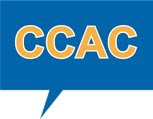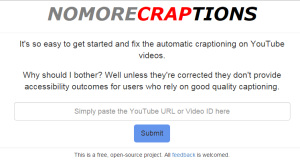The film industry is forever devising new ways to capitalise on technological advancements to attract audiences.
But back in the 1920s, and on the verge of going bust, Sam Warner, co-founder (with brothers Harry, Albert and Jack) of small studio Warner Bros. introduced some fancy tech that, with the help of jazz singer Al Jolson, unintentionally alienated many film fans for the next 75 years.
Before the Movietone sound-on-film system became the industry standard, the short-lived Vitaphone sound-on-disc system was the most hi-tech audio product available. Originally intended to cut costs of live musicians, the 1.0 non-surround system was responsible for the innovative synchronized mix of Al Jolson’s singing, dialogue and music for Warner Bros’ The Jazz Singer (1927).
Although it contained few spoken words, and played silently in many cinemas that had yet to be equipped for sound, The Jazz Singer launched the ‘talkies’ revolution, taking $3m box-office (spectacular in those days), putting the US touring stage production of ‘The Jazz Singer’ out of business, and confirming its studio as a major player in Hollywood.
(Sadly, just before the premiere, Sam Warner died of complications brought on by a sinus infection. He was 40).
Jolson’s next WB musical, 1928’s ‘The Singing Fool’, was an even bigger success (almost $6m) and held the box office attendance record for 10 years (eventually broken by Disney’s Snow White and the Seven Dwarfs). Jolson become America’s most famous and highest-paid entertainer of the time.
So how exactly was the cinema experience ruined for many film fans?
The end of the ’20s signalled the end of the silent era as sound and dialogue in movies became standard practice. With ‘talkies’, the essential plot-following device – the caption card – was deemed no longer necessary.
For people with hearing loss, a cinema visit was suddenly, if unintentionally, no longer enjoyable or accessible. By and large, they stopped going. For 75 years. A major step backwards for equality, inclusion and community integration.
Which is all the more ironic as Thomas Edison, ‘man of a thousand patents’ and pioneer-creator of the first copyrighted film, was almost completely deaf from an early age. Without captions he wouldn’t have been able to follow many of the new ‘talkies’.
I often wonder what Edison and Alexander Graham Bell, the two inventors responsible for introducing many of the film, sound and light technologies we take for granted today, would have thought of this ‘talkies’ development, as they chatted over their latest inventions with Étienne-Jules Marey, who was a major influence on all pioneers of cinema, at the Centennial Exhibition in Philadelphia.
Of course they could never have had such a discussion – Marey died 25 years before ‘The Jazz Singer’, Bell died 5 years before, and Edison 5 years after. (And, er, the exhibition was held half a century before the film, in 1876…)
But let’s imagine they were all having a chat over a cappuccino, at the same exhibition, held just AFTER the films release. I would expect that they would have been very disappointed at the demise of caption cards.
A few decades before the release of ‘The Jazz Singer’, Alexander Graham Bell, inventor of the telephone, created the Photophone – a device that enabled sound to be transmitted on a beam of light (the principle upon which today’s laser and fiber optic communication systems are founded).
Étienne-Jules Marey had combined a camera and a Gatling gun to create a mutant photographic machine-gun/steadicam device, capable of shooting 60fps (more than a century before James Cameron and Peter Jackson attempted HFR).
Edison came up with the Kinetophone, the first attempt in history to record sound and moving image in synchronization.
All three pioneers were well aware of the importance of captions – words on screen (or a piece of cardboard).
Edison – almost completely deaf from an early age – most likely wouldn’t have liked the film. He hated Jazz, preferring simple melodies and basic harmonies, very possibly due to his high-frequency hearing loss.
Bell had founded and helped run a school for deaf children with his wife, who was also deaf. Caption cards were used to teach the deaf children reading and literacy skills.
And Marey was a foreigner! (It’s well known that captions/subtitles are beneficial to students studying English as a Second Language).

Your Local Cinema – lists screening of subtitled and audio described cinema across the UK
Fast forward to the end of the century, and reality, when caption cards were re-introduced to UK cinemas in the form of on-screen subtitles. Steven Spielberg, an early investor in the sound company, Digital Theater Systems (DTS), championed its new cine audio format – a digital sound-on-disc system – and encouraged cinemas to install it ahead of his highly anticipated new release, Jurassic Park (1993). A decade later, DTS updated its (by now popular) system to include, alongside music and dialogue tracks, multi-language subtitles and a caption track, enabling cinemas to project synchronised captions directly on to cinema screens.
Dolby launched a similar system soon afterwards. Not long after that – probably feeling bad about the Al Jolson episode – cinemas across the UK collaborated with the UK Film Council to install this new ‘access’ technology.
After 75 years, people with hearing loss could once again enjoy, rather than endure, the cinema experience. Hurrah!
And, for the first time in the UK, people with sight loss could also enjoy it as an audio description (AD) track – a recorded narration – could also be delivered to wireless headphones. Double hurrah!
(But sadly, for people with loss of smell, things were not so good. ‘Smell-O-Vision’, introduced in the 1960s, just never caught on).
As before, Warner Bros. was at the forefront of this quiet revolution in cinema.
The first film to utilise the new digital caption/subtitle/AD system was Harry Potter and the Philosopher’s Stone (2001). (Steven Spielberg, having played his part in re-introducing captions to cinema audiences, had declined an offer to direct – he’d done enough).
Today, another decade later, UK film distributors routinely ensure the provision of caption/subtitle/AD tracks for most popular titles. More than 1,000 have been produced to date.
Almost every UK cinema is now accessible in that all d-cinema systems have built-in ‘access’ facilities and can broadcast caption/subtitle/AD tracks. Every week hundreds of cinemas present a total of around 1,000 shows with on-screen captions. Thousands more shows are screened with audio description, received via personal headphones.
But as the number of shows and the audience have grown – by around 20% year-on-year – the current UK caption format has inevitably become problematic. Since captions in UK cinemas are on-screen, inconvenient and costly separate shows are necessary, segregating people and restricting the choice of films and showtimes that a cinema can provide. A limited audience, combined with limited opportunities to attend, ultimately results in limited box-office returns.
For some time, the industry has wrestled with the conundrum of how to provide an economically viable service to people with hearing loss – how to get a good balance between what the public wants and what it’s possible reasonably to provide.
Digital cinema brings with it digital participation – inclusion – which is just as important as digital infrastructures and digital content.
For the UK film industry, a commitment to diversity and inclusion is not just a social and legal responsibility. It aims to ensure that cinema is accessible to all, regardless of age or ability, by understanding and catering for audiences with physical or sensory impairments, and their diverse technological needs.
The UK film industry is currently investigating recently-developed solutions that could improve the cinema experience further for people with hearing loss. For example, ‘personal’ inclusive caption/subtitle solutions are now available from Sony, Doremi and others that, instead of projecting captions on to the cinema screen, display them on wearable glasses or small, seat-mounted displays. So, any ‘regular’ cinema show could also be a captioned show. These solutions are already being rolled out in the US and Australia.
It’s hoped that for audience members with hearing loss, as well as cinema exhibitors and film distributors, the convenience of a personal solution, and the vastly increased choice it can offer, will be more favourable than separate, inconvenient, costly on-screen captioned shows.
It is hoped that within the next few years, audiences with hearing or sight loss will be able to enjoy the big-screen experience as never before.
As Al Jolson (who really should be forgiven by now) famously said: “I tell yer, you ain’t heard nothin’ yet!”
With thanks to Your Local Cinema for this article. Posted with permission.
Stay tuned for another follow-up post very shortly to this on subtitling technology for the cinema.















virginia 12:15 am on January 4, 2016 Permalink |
Hi there,
I’ve read a few of your posts as have been researching ‘live captions’ for news websites. The live captions to display on a screen would read a bit gobblydeegook if you know what I mean? So they are in a flat text file, so the image you show in the post below “How subtitles add value, not just access” about Video Metadata.
Any thoughts on how best to display this for news stories and videos that have not been captioned properly? Was thinking of an accordian drop down.
Obviously this is a big SEO plus if it can be done correctly.
The video content has to remain on the actual news website.
Rgds
Virginia
LikeLike
iheartsubtitles 12:09 pm on January 6, 2016 Permalink |
Hi Virginia – Are you talking about live news being captioned online when it is no longer live, or are you looking to improve live captioning of live news? If so this is something that is in its infancy compared to other media that is captioned or subtitled online.
LikeLike